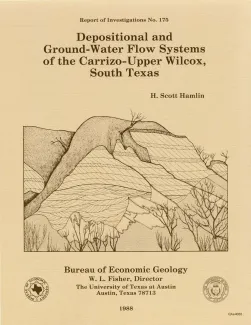
Publication Details
Geolocation:
Get the Publication
$4.50
Abstract/Description:
In the Rio Grande Embayment of South Texas, the Carrizo Formation (lower Eocene) consists of two sand-rich fluvial depositional systems that grade basinward into several deltaic complexes within the upper part of the Wilcox Group. Data from oil, gas, and water wells provide information on Carrizo fluvial and ground-water flow systems, and outcrop and core data help define component lithofacies.The bed-load channel system contains multistory, multilateral fluvial channel-fill sandstones deposited by broad, sand-rich, dominantly braided streams. Mudstones are mainly thin, laterally discontinuous remnants of abandoned channel fills. Bed-load channel sandstones are most abundant along the major fluvial axes and form the depositional framework of the interval. The mixed alluvial system consists of a more typical suite of coastal-plain facies, which were deposited by meandering streams in a variety of channel and interchannel environments. Mixed-load channel-fill sandstones tend to be isolated and surrounded by overbank mudstones and thin sandstones. Fluvial sediment input converged on the embayment from the west, northwest, and north.The bed-load channel system is the Carrizo aquifer. Regional ground-water flow is controlled by topography, structural configuration, and, to a lesser extent, sandstone geometry. Rainfall recharges the aquifer at outcrop; ground water flows gravitationally down structural/depositional dip into the deeper subsurface, encounters updip-expulsing formation waters, partly mixes with them, and finally discharges upward, mainly along fault-related permeability pathways. Upward cross-formational leakage, driven by high fluid pressures, is common throughout much of the aquifer.As Carrizo ground water moves down flow paths from outcrop, a systematic hydrochemical evolution occurs: total dissolved solids gradually increase, and calcium-sodium-bicarbonate-chloride water changes to sodium-bicarbonate water. Local hydrochemical anomalies can be related to variations in recharge characteristics, ground-water mixing, and aquifer lithology. The most important processes controlling hydrochemical evolution within the aquifer are calcite dissolution and cation exchange.The updip Carrizo Sandstone contains fresh ground water, small oil fields, and uranium deposits. The downdip upper Wilcox trend is an area of active hydrocarbon exploration and production.